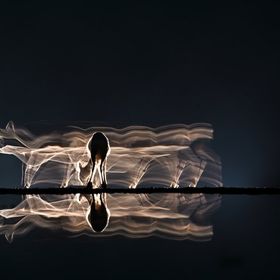
Views
2137
Likes
Awards
Featured
Peer Award
Top Choice
Superb Composition
Outstanding Creativity
Absolute Masterpiece
Magnificent Capture
All Star
Superior Skill
Virtuoso
Top Ranks
Categories
 Platinum
Platinum
michaeltillman
May 03, 2018
I have a shot similar to this one of a Cheetah; except, my shot came from The Phoenix Zoo in Phoenix, Az. Nice shot. Welcome to the ViewBug family my friend.
 Platinum
Platinum
Same photographer See allBehind The Lens
Discover more photos See all
Behind The Lens
Location
I created this photo during private photo event with my good friends photographers in the Czech Republic. We took advantage of a unique opportunity to take a pictures of a young male tiger, which moves free in the countryside. The scene was carefully selected to faithfully match the natural biotope of the tiger in Siberia. Although it was the young animal in human care, this action was not without risk. The tiger walked about 4-5 meters from us. It was an unusual experience to be in the presence of this majestic animal.Time
It was May, early in the morning, about 6:15 o'clock in the morning, it was very damp and a morning fog floated above the meadow.Lighting
The morning fog over the landscape gave the our scene the ideal diffuse golden backlight. Therefore on the plants and the fur are no highlights and there are no significant shadows on the lioness.Equipment
I worked with my favourite very fast digital camera Nikon D5 and with my fast lens Nikkor 400 f/2,8. I stabilized this set on a carbon tripod Really Right Stuff TVC-32G Versa, thanks to him I could be very low over the vegetation.Inspiration
I love nature and especially wild animals. But I'm very busy at work, now I can not take part in a time-consuming wilderness expedition. And I think that collective photographic expedition directly into the habitat of the endangered big cats is not correct. That's why I took advantage of the unique possibility of assisted or arranged photographing of a wild animal in human care, that does not shake the human presence and creates only small risk for the photographer.Editing
I love natural photos. Shots without big adjustments. I try to capture all my photos so I do not have to use the post-processing. I know it is very modern and trendy today, but I do not work with PS or LR or other sophisticated post-processing software. I invoke my NEF only in Nikon View and Nikon Capture and make only minor edits. Maybe my photos could be even more attractive, but I want to show real reality.In my camera bag
The contents of my robust Tamrac bag is primarily a powerful digital camera that I can rely on in every weather. Now I'm normally using the body Nikon D5 and the backup body Nikon D850. I normally wear Nikkor lenses 24-70 f/2.8 and 70-200 f/2.8. These "workers" have always been with me. On the "macro" action I take the excellent old micro lens Nikkor 200 f/4 or micro lens 105 f/2,8. For animals and birds photography I need to pack "heavier weight" - I'm using the lens Nikkor 400 f/2.8 and now also a new zoom lens Nikkor 180-400 f/4. The last one year I test the new mirrorless Nikon Z7 with my fast lenses.Feedback
When it comes to photographing the endangered animal species, I recommend the form of "assisted photography". It's about photographing a species of wild animal that is in human care. The animal is tame, working well with it, and it is especially safe for humans. Most importantly, the photographer does not disturb wild animals in their natural biotope. Today there is a trend commercial group photographic expeditions to exotic countries. From the yield is funded the rescue of endangered animal species. But too frequent visits of groups of people in animal biotopes are very disturbing and stressful for endangered animals and their food chain. These expeditions can become very destructive for small animal populations and, instead of rescuing animals, can speed their extinction. We all photographers have to think, whether our money really helps those animals.











































